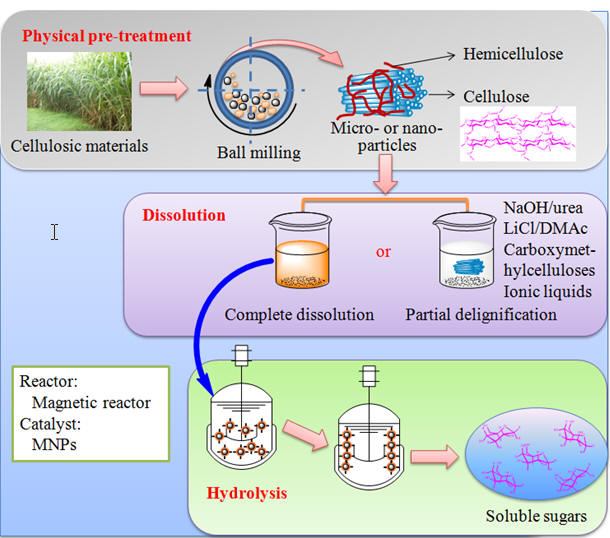Owing to the depletion of fossil resources and the increasing demand on fuels, it is important to develop renewable resources to produce fuels and chemicals for energy security. Over the past century, much effort has been made to develop processes for the efficient conversion of carbohydrates to sugars and biofuels. However, the current world bio-ethanol production only accounts for 6.25% of the total potential bio-ethanol production.
It is clear that many methods are available for converting biomass (especially cellulose and hemicellulose) into biofuels and that biomass conversion processes will continue to have industrial interest. Some of the key challengesare in the design of the biomass feedstock processes that are environmentally friendly, economic, versatile and efficient in view of the variable composition and diffuse distribution of biomass.The use of solid acid catalysts can address some of these challenges due to their use of mild operating conditions coupled with selective and efficient reactions. Solid acid catalysts have great potential for efficiently transforming lignocellulosic biomass into biofuels and can replace many conventional liquid acids for hydrolysis and pretreatment.
Prof. FANG Zhenof Xishuangbanna Tropical Botanical Garden (XTBG) was invitedbyProf. N.A. Chigier, Editor ofProgress in Energy and Combustion Science(PECS)to contribute a review paper in this area.
Dr, Guo Feng and Prof. Fang Zhen et al. (Biomass Group, XTBG) summarized and analyzed current achievements in the hydrolysis of cellulose using solid acid catalysts. They briefly introduced conventional biomass pretreatment and hydrolysis techniques, and reviewed in detail the characteristics of biomass hydrolysis for five types of solid acid catalysts grouped as H-form zeolites, transition-metal oxides, cation-exchange resins, supported solid acids and heteropoly compounds. Suggestions were given for promoting catalytic efficiency for each kind of solid acid catalysts. Methods to promote reactions or increase selectivities such as microwave, ultrasonication and nanotechnology were introduced. Finally, they highlighted a recent strategy that exploitsacid-functionalized paramagnetic nanoparticles suitable for cellulose hydrolysis, and addressed new opportunities for the use of solid acid catalysts.
The review entitled “Solid Acid Mediated Hydrolysis of Biomass for Producing Biofuels” has been published online inProgress in Energy and Combustion Science(http://dx.doi.org/10.1016/j.pecs.2012.04.001).

Hydrolysis of cellulosic material into soluble sugars by paramagnetic nanoparticle solid acid catalysts (Image by Guo Feng)

